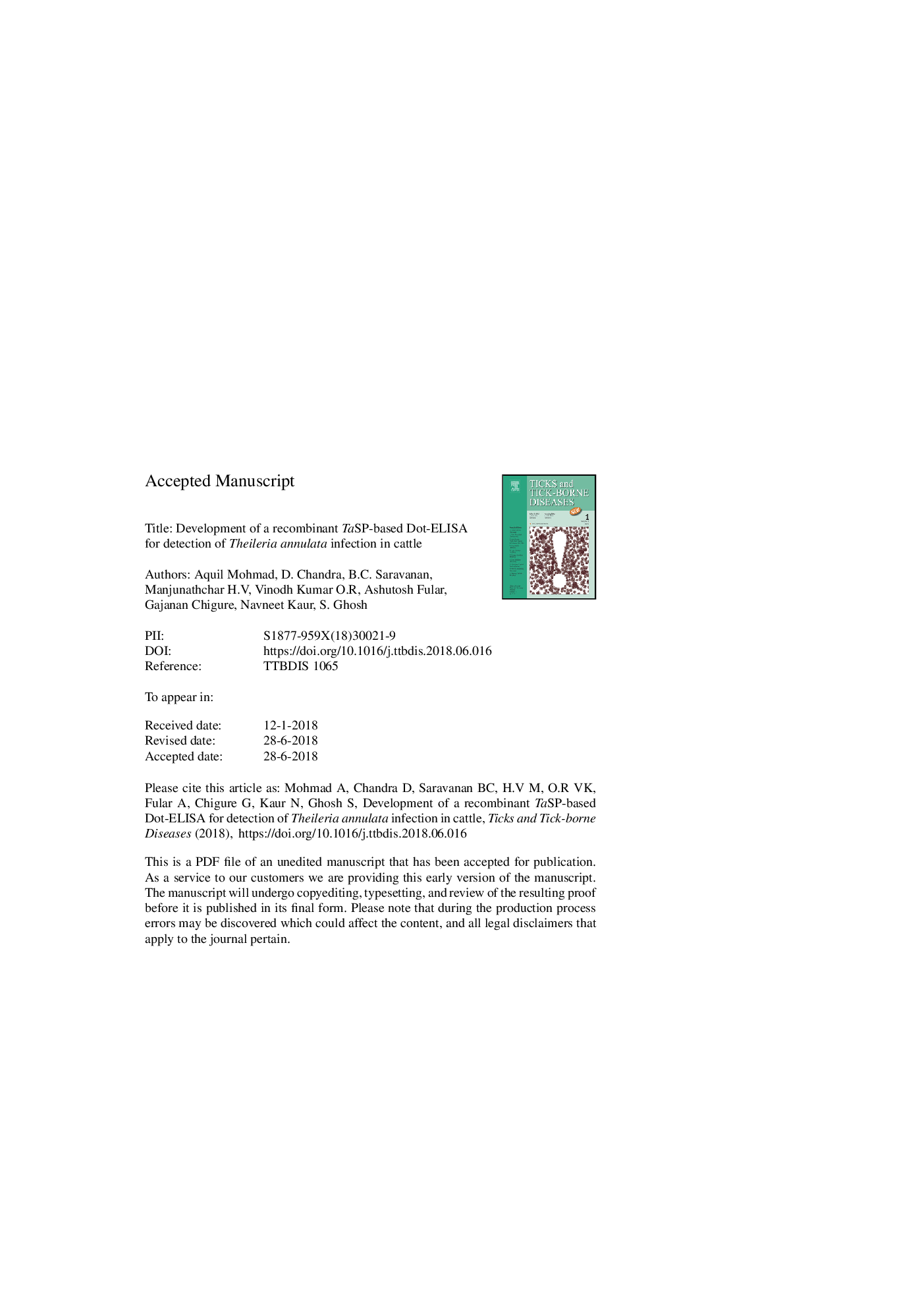| Article ID | Journal | Published Year | Pages | File Type |
|---|---|---|---|---|
| 8965626 | Ticks and Tick-borne Diseases | 2018 | 22 Pages |
Abstract
The study was conducted to develop and validate Dot-ELISA for the diagnosis of Theileria annulata infection in cattle using recombinant Theileria annulata surface protein (r-TaSP). The r-TaSP based indirect plate-ELISA was used as a reference test to compare the efficacy of the Dot-ELISA. The Dot-ELISA was optimized with 500â¯ng of antigen per dot, 1:150 dilution of serum and 1:1000 dilution of secondary antibody for positive and negative reaction. A total of 17 confirmed positive, 25 negative and 129 field sera samples were used to calculate the diagnostic accuracy of Dot-ELISA in comparison with indirect plate-ELISA. The diagnostic sensitivity and specificity of the Dot-ELISA was 95.8 per cent (95% CI, 93.1-97.2) and 80 per cent (95% CI, 48.1-96.2), respectively. The positive predictive value (PPV) of Dot-ELISA was 98.2 percent (95% CI, 95.5-99.7) and negative predictive value (NPV) was 61.6 percent (95% CI, 37-74). The positive and negative likelihood ratios were 4.79 (95% CI, 1.8-25.69) and 0.053 (95% CI 0.03-1.4), respectively. The Dot-ELISA showed moderate agreement (k value, 0.67, 95% CI, 0.36- 0.82) with indirect plate-ELISA. The developed Dot-ELISA is less expensive and convenient for the diagnosis of T. annulata infection in cattle under field conditions.
Related Topics
Life Sciences
Agricultural and Biological Sciences
Animal Science and Zoology
Authors
Aquil Mohmad, D. Chandra, B.C. Saravanan, Manjunathchar H.V, Vinodh Kumar O.R, Ashutosh Fular, Gajanan Chigure, Navneet Kaur, S. Ghosh,
